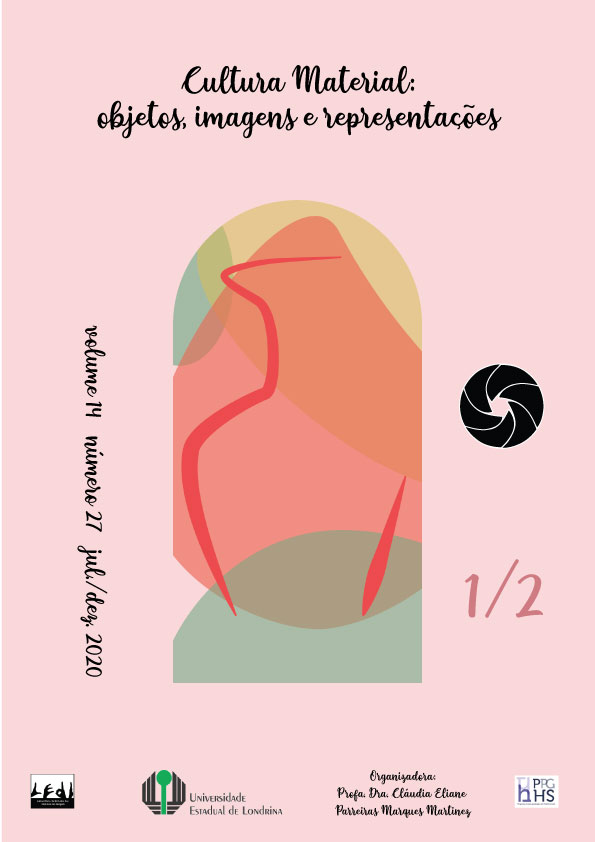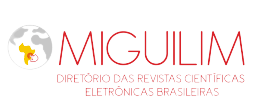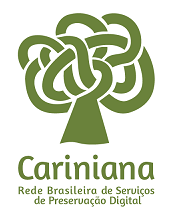The Mona Lisa and its Fascination: the dazzle that has crossed the centurie
DOI:
https://doi.org/10.5433/2237-9126.2020v14n27p452Keywords:
Material culture, Mona Lisa, Art history, RepresentationAbstract
This article discusses the power of the material object inserted in the cultural and social context and exemplified by the Renaissance painting by Leonardo da Vinci, the Mona Lisa. More than 500 years have passed since its creation and its mysteries continue to intrigue scholars and curious about the subject. Among the uncertainties of its origin and its uniqueness, the study of this work of art is both an investigation of the past and a reference to the present. Investigation of the past for its symbolic character within the history of art and culture of the Italian Renaissance, and reference of the present for evidencing a research of the study of material culture for the understanding of society.Downloads
References
BASTIANON, Francesca. Da Giorgio Vasari a oggi: com’è cambiata la visione di leonardo da vinci. 2019. Disponível em: https://ilbolive.unipd.it/it/news/ giorgio-vasari-oggi-come-cambiata-visione-leonardo. Acesso em: 23 ago. 2020.
BBC NEWS BRASIL. A fascinante história dos homens que Leonardo da Vinci amou. 2019. Disponível em: https://www.bbc.com/portuguese/vert-cul-50412915. Acesso em: 23 ago. 2020.
BRAGOS, Maíra Pouey. ¿Leonardo da Vinci científico? Em Curso: Revista da Graduação em Filosofia da UFSCar, São Carlos, v. 2, p. 1-11, 2015.
BROTTON, Jerry. The Renaissance: a very short introduction. New York: Oxford University Press, 2006.
DOMINGUES, Petrônio. Cultura Popular: as construções de um conceito na produção historiográfica. História, São Paulo, v. 30, n. 2, p. 401-419, ago. 2011.
ENCICLOPÉDIA ITAÚ CULTURAL. Dadaísmo. 2018. Disponível em: http://enciclopedia.itaucultural.org.br/termo3651/dadaismo. Acesso em: 23 ago. 2020.
FRAZÃO, Dilva. Marcel Duchamp: pintor e escultor francês. 2019. Disponível em: https://www.ebiografia.com/marcel_duchamp/#:~:text =Marcel%20Duchamp%20(1887%2D1968),28%20de%20julho%20 de%201887. Acesso em: 23 ago. 2020.
GOMBRICH, Ernst Hans Josef. A Harmonia Alcançada: Toscana e Roma, Início do Século XVI. In: GOMBRICH, Ernst Hans Josef. A História da Arte. Rio de Janeiro: Ltc, 2013. Cap. 15. p. 215-245.
HOPE, Charles; MCGRATH, Elizabeth. Artists and Humanists. In: KRAYE, Jill (ed.). The Cambridge Companion to Renaissance Humanism. Cambridge: Warburg Institute, 1996. Cap. 9. p. 161-188.
HUCHET, Stéphane. A História da Arte, disciplina luminosa. Revista da Universidade Federal de Minas Gerais, Belo Horizonte, v. 21, n. 1 e 2, p. 222–245, 2016. Disponível em: https://periodicos.ufmg.br/index.php/revistadaufmg/ article/view/2649. Acesso em: 2 jan. 2021
JOHNSON, Geraldine A. Renaissance Art: A Very Short Introduction. New York: Oxford University Press, 2005.
KEMP, Martin. Mona Lisa. In: KEMP, Martin. Christ to Coke: How Image Becomes Icon. New York: Oxford University Press, 2012. Cap. 5. p. 141-165.
LARA, Tiago Adão. A que veio o Humanismo? Educação e Filosofia, Uberlândia, v. 25, n. 13, p. 211-229, jan. 1999.
LOMBARDO, Giovanna. Andy Warhol e la sua Gioconda. 2017. Disponível em: https://www.mondomarziale.org/andy-warhol-e-la-sua-gioconda. Acesso em: 23 ago. 2020.
MENESES, Ulpiano. O objeto material como documento. Aula ministrada no curso “Patrimônio cultural: políticas e perspectivas”. LAB/CONDEPHAAT, p. 1-15, 1980. Disponível em: https://leiaufsc.files.wordpress.com/2017/08/meneses-u-b-o-objeto-material-como-documento.pdf. Acesso em 29 out. 2019.
NAVES, Filomena. “Há sempre qualquer coisa nova para descobrir em Leonardo da Vinci”. 2019. Disponível em: https://www.dn.pt/cultura/ha-sempre-qualquer-coisa-nova-para-descobrir-em-leonardo-da-vinci-11033696.html. Acesso em: 29 dez. 2020.
REDE, Marcelo. História a partir das coisas: tendências recentes nos estudos de cultura material. Anais do Museu Paulista, v. 4, p. 265-282, jan./dez. 1996.
SCHLESENER, Anita Helena. A escola de Leonardo: Política e educação nos escritos de Gramsci. Brasília: Liber Livro, p.188, 2009.
WOLFFLIN, Heinrich. Renascença e Barroco: estudo sobre a essência do estilo barroco e sua origem na Itália. São Paulo: Perspectiva, 2012.
WILCOX, Marrion. Francesco Melzi, Disciple of Leonardo. Art & Life. v.11, n. 6. p. 294-299. dez. 1919. Disponível em: https://www.jstor.org/stable/20543107? origin=crossref &seq=6#metadata_info_tab_contents. Acesso em: 23 ago. 2020.
ZIRPOLO, Lilian H. Historical Dictionary of Renaissance Art. 2. ed. Lanham, Maryland: Rowman & Littlefield, 2016.
Downloads
Published
How to Cite
Issue
Section
License
Domínios da Imagem adopts the Creative Commons Attribution 4.0 International License, therefore, the copyrights related to the published articles belong to the author(s), who grant the journal the exclusive right of first publication.
Under this license it is possible to: Share - copy and redistribute the material in any medium or format. Adapt - remix, transform, and build upon the material, giving due credit and providing a link to the license and indicating if changes were made.












 The works in this journal are licensed under Creative Commons .
The works in this journal are licensed under Creative Commons .
